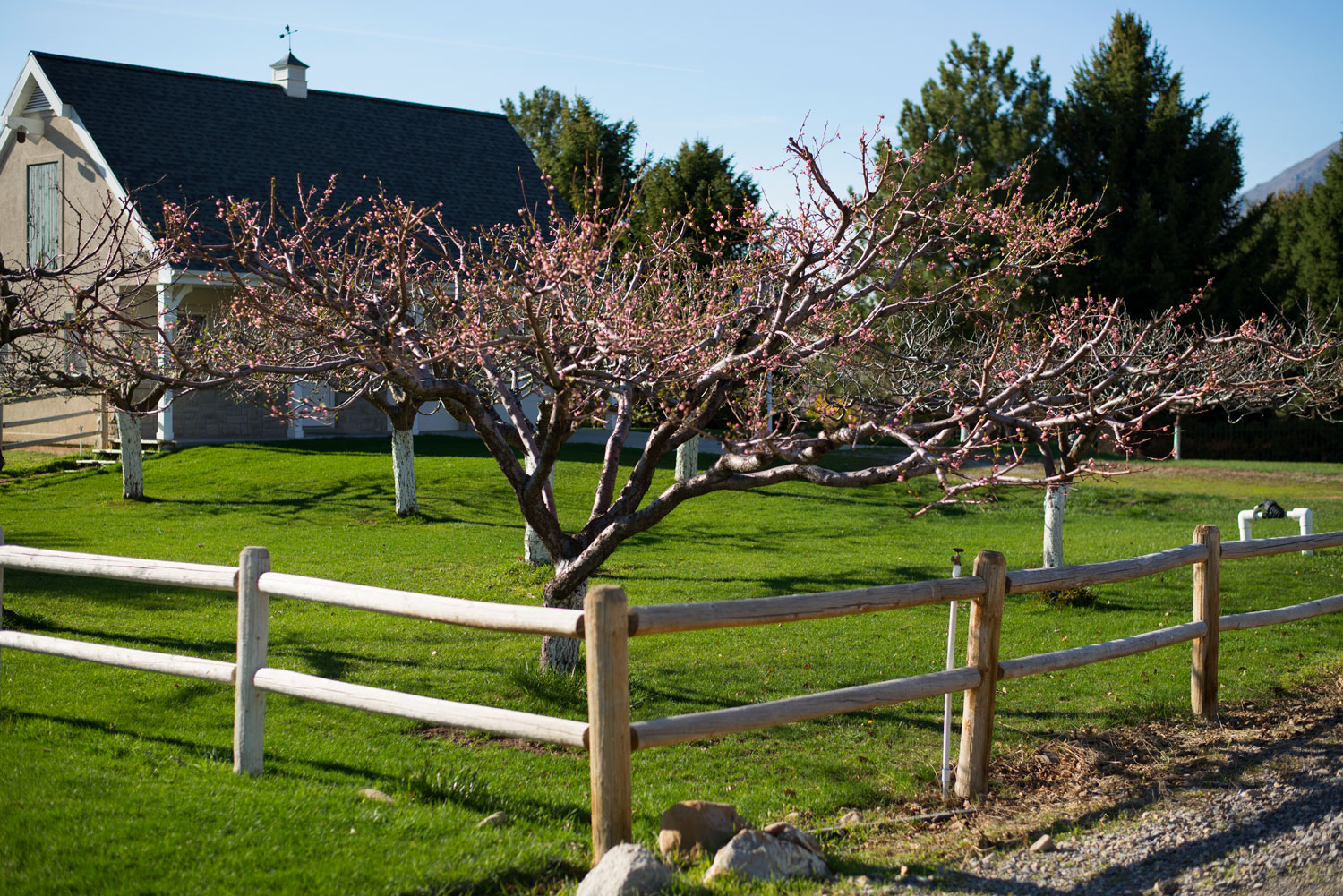Mini Orchards
Photos by Forrest Anderson
As talk of getting “back to normal” has engulfed us, I have to admit that I'm cringing. While I can’t wait for the economy to revive, to be able to go out without a mask, to get together with loved ones and to travel, there are things we’ve learned from the pandemic that I hope we keep doing.
One of them is backyard gardening. The pandemic taught us how vulnerable our food supply is, both because supply chain disruptions occurred when the pandemic began and because large numbers of people lost their jobs and have had to depend on overburdened food banks for food.
I’m hoping that the pandemic surge in urban gardening will carry forward long-term to help stabilize food supplies, make urban environments greener and more garden-like, and improve urban air quality.
One of the best ways to make that happen is planting mini orchards of dwarf and semi-dwarf fruit trees, fruit bushes and strawberry beds. Planting edible plants in urban environments has become a global movement, as some 6.3 billion people live in an urban environment. About 80 percent of Americans live in urban communities, and planting mini orchards is a way to help stem the tide of tree destruction caused by urban development. Trees help cool communities and slow the effects of climate change as well as cleaning the air of pollution.
Once established, dwarf fruit trees need little maintenance. In some communities, people plant fruit trees at the front of their yards to provide a food supply that they share with other people walking by. We have a neighbor who places a Free Fruit sign on his front fence when he has picked all that he wants off of his trees so that people walking by can pick some. He even provides bags for them. He told us that last summer, the free produce plus surplus vegetables from his garden that he sets out helped feed a large family whose parents had lost their jobs.
Urban orchards also help provide much needed habitat for wildlife.
What are dwarf trees?
Dwarf fruit trees usually are created by grafting a root stock, or the root system of a tree, with a scion, or the above-ground part of the tree. The rootstock has dwarfing characteristics, and the scion contributes good fruit quality and hardiness. Most dwarf trees are three to four years old by the time you purchase and plant them.
Dwarf trees get from 8-10 feet high and wide. Semi-dwarf ones get a little larger – 12-15 feet high and wide, as compared to standard-sized fruit trees, which grow to 30 feet tall and wide.
Dwarf and semi-dwarf fruit trees have major advantages in an urban environment. Five times as many dwarf fruit trees can be planted in the same space as a dozen standard-sized fruit trees, providing more varieties of fruit in a small space. This gives a margin of food stability in case one variety doesn’t do well in a given year.
Dwarf trees can bear fruit the year you plant them or the next year, whereas standard-sized trees can take seven years to bear fruit.
Dwarf trees use more of their nutrients to make fruit instead of wood than standard-sized trees do. They have a shallower root system than standard trees, but if you give them decent care, they will provide fruit for a long time.
Their fruit is the same size as that of standard trees or a little larger. However, they don’t produce near as much fruit per tree, so not as much goes to waste or causes a mess by falling on cars, driveways and sidewalks.
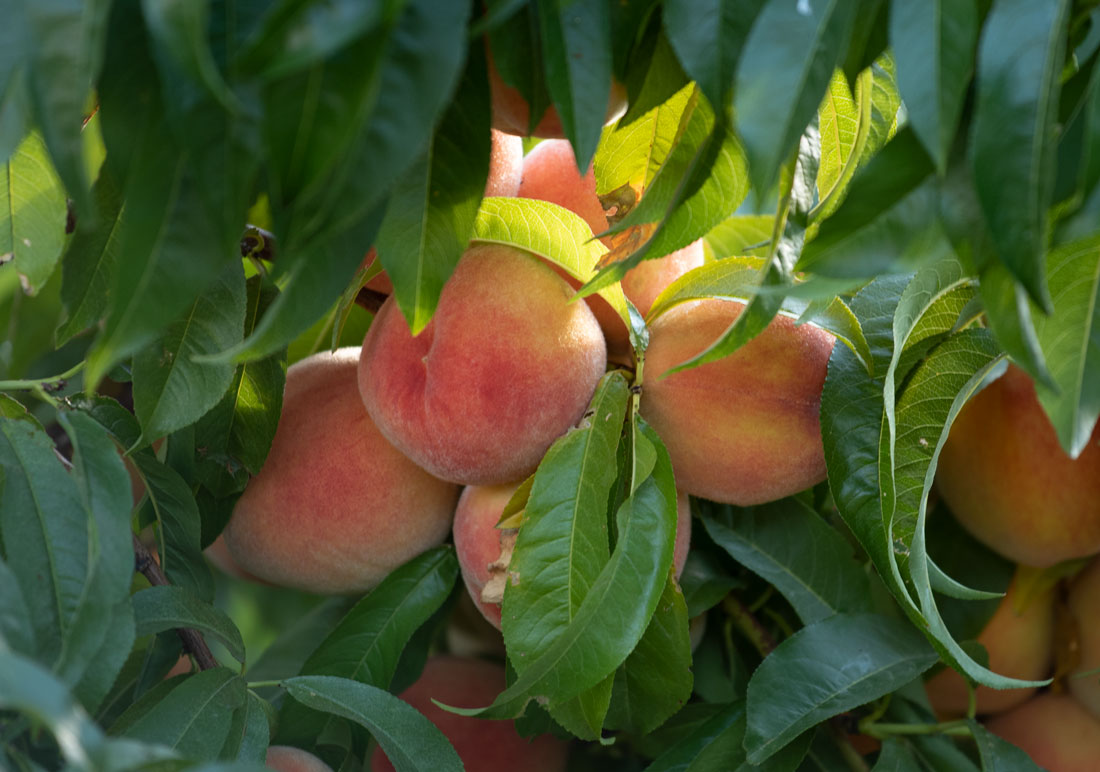
You don’t need a ladder or even a step stool to prune and harvest dwarf fruit trees.
They are beautiful bouquets when they flower, then grow fruit and foliage, so they can be a lovely part of an urban landscape.
Dwarf trees are good for narrow spaces such as side yards, parking strips (as long as they aren’t close enough to cars that they will drop fruit on them) and islands in yards. They thrive in large pots filled with good potting soil, so if you want to grow a citrus tree in the summer but have cold winters, you can wheel the tree inside during the winter.
Buying Dwarf or Semi-dwarf Fruit Trees
Choosing dwarf trees begins with knowing what hardiness zone you are located in. Once you know what trees grow well in your climate, check with your local plant nursery to see what varieties they have. The best trees for your landscape usually are ones that are adapted to your region, hardy for where you live and a size that is right for your space. I have had better luck planting potted trees than bare root ones. Potted trees are easy, because you can plant them almost any time during the growing season. When buying a plant, consider whether it has a straight trunk and balanced branches. There should be no orange blotches on the leaves, leaves turning yellow or dark ooze coming off branches. Transport your tree carefully so it won’t be damaged on the trip home.
Once you get some experience growing dwarf trees, don’t hesitate to try varieties that you can get on-line as long as they will grow well in your climate. Choose disease-resistant varieties, as they work much better in the constraints of an urban garden. With experience, you can choose any heirloom or other variety of fruit tree that you want, and prune it to keep it small.
Don’t limit your orchard to trees – service berries are a native American shrub with small berry-like fruit and they are easy to grow. No cross-pollination is needed. Other fruit bushes also are an option.
Nut trees are fun to grow and almonds produce beautiful flowers. However, nuts also can attract squirrels. Walnuts secrete chemicals into the soil that prevent other plants from growing nearby so don’t plant them near a flower or vegetable garden.
Where To Plant Your Trees
Your trees should be close enough to each other to encourage cross-pollination so that the bees and other pollinators can easily fly from tree to tree but far enough from each other so their roots don’t compete for water and nutrition or so they won’t throw shade on each other when they are mature. The rule of thumb is that dwarf trees can be grown 12 to 15 feet apart, and semi-dwarf trees 15 to 18 feet apart. Full-sized fruit trees, on the other hand, need to be planted up to 30 feet apart.
Some fruit trees need to be planted in pairs so they can cross-pollinate, while others are self-pollinating. You can plant different varieties of cross-pollinating trees, such as apples, but they have to be blossoming at the same time in order to cross-pollinate. For this reason, you don’t want to plant a late blooming tree with an early blooming one if you only have two of them.
At least eight hours daily of direct bright sunlight is needed for dwarf trees, so don’t plant them in the shade of another tree.
Avoid boggy ground, as it can cause root rot. A gentle slope is a good spot, but a steep one could make it difficult for you to harvest fruit.
The soil should drain freely, so amend the soil with 50 percent compost, 50 percent native soil when you plant.
For a small yard, patio or balcony, consider columnar fruit trees. They produce fruit vertically along and very close to the trunk. You can make a living edible fence out of them, plant them in a small space, or grow them in a large pot on a balcony or patio. Edible living fences help cool down areas by reducing the heat bouncing off of fences of walls while providing fruit. They can also consist of a row of berry or other fruit bushes.
Espalier trees, which are trained to grow flat along a wall or other framework, or columnar trees can be grown alongside a fence or masonry wall. The wall collects solar energy all day and gives it back to the fruit at night.
When you plant trees, prune away all branches that cross over each other. They need to be staked because once they became heavily laden with fruit, the weight can snap branches or the trunk. Bushes that bear fruit can be supported with a trellis.
Caring for Your Trees
You need access to convenient irrigation – a hookup or hose to water your plants two or three times a week while they are growing. Thoroughly soak the root before placing your trees, then check on the plants every few days after planting to make sure the soil under the surface doesn’t dry out completely.
Young trees need to be watered every few days for the first six weeks after planting. After that, water young trees once a week (twice a week when the weather is really hot and dry) starting in May and going to the end of September. You don’t have to water in the winter when trees are dormant or in early spring if the snow is melting and it rains. Water deeply, about three buckets of water per tree. You need to water more if the soil is sandy and less if your soil has more clay. Stop watering if standing puddles form. Keep the water away from the trunk, branches and leaves of trees to avoid wood rot and waterborne disease. Don’t use a sprinkler system. Watering works better using a drip hose rather than sprinklers, because sprinklers spray water on a tree’s trunk and cause waterborne diseases to move into the tree.
Once a tree is established, it needs less water so you can space out irrigation to every three weeks or once a month. One deep watering is more useful than watering lightly.
After the initial pruning when you planted them, don’t prune fruit trees until the second year. For the first two years, remove all the baby fruit from your trees so that the trees can develop their roots. After that, prune the branches in the spring before they bloom. Keep them pruned to below seven feet in height, as that is how high you can comfortably reach to harvest the fruit and to prune them. When you prune, create and maintain a central column for your tree that allows for drying breezes to pass through it to help prevent mildew and disease. As you prune a fruit tree, open the tree’s interior canopy for maximum sunlight penetration and to develop scaffolding limbs that support ripening fruit. This low-branching tree will be short, strong, easy to care for and harvest and will produce good fruit. Give each fruit-bearing branch plenty of room above and below for maximum sunlight on ripening fruit.
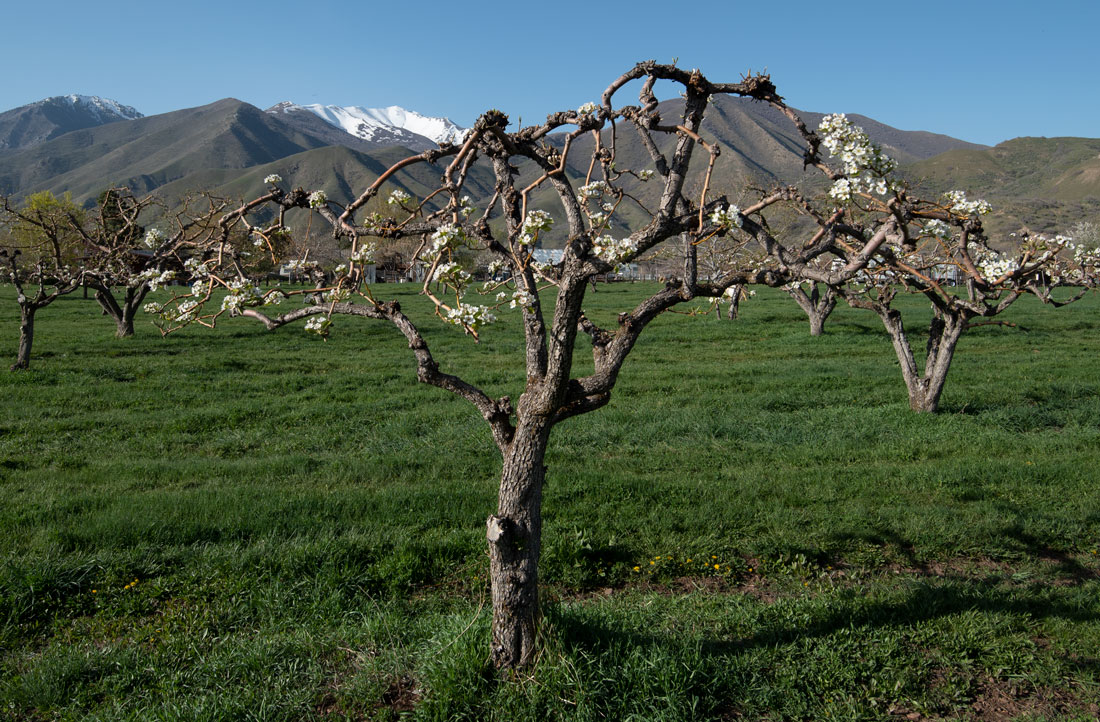
Prune trees so the branches spread out horizontally, and limit the tree's height.
In urban environments, soil is often disturbed for building and then a small amount of topsoil is brought in to cover the surface. This doesn’t provide the same rich soil that undisturbed areas do. Trees also don’t get the benefit of leaves and branches falling to the ground and decaying to enrich the soil, so urban gardeners have to improve the soil. Trees need nitrogen, phosphorus and potassium to grow properly, so you may have to add them to obtain a proper balance.
During the growing season, check the trees often to make sure they don’t have any pests or diseases that require management. You can plant perennial companion plants at their feet to help deter aphids and other pests, keep the soil cool through mulching, and produce edible herbs and flowers. If you spot pest or disease problems, treat them quickly. Growing garlic, basil, lavender and thyme can help protect your plants against harmful insects. Flowering plants such as geraniums, marigold and helianthus battle aphids and white flies near your fruit.
Planting berry bushes and strawberries also can help balance your yard’s ecosystem through diversification. Yards that have a diversity of plants tend to be more balanced and attract beneficial insects while repelling harmful ones.
Hang a birdhouse designed to attract tree swallows or bluebirds in your orchard and you can attract pest-control experts that will gobble up insects that can attack your trees. A single family of tree swallows can eat some 300,000 insects annually.
Don’t park a car or place a heavy object over a tree’s roots, as it will compress the roots and make them more susceptible to fungal root disease. Signs of this are yellowing foliage, reduced growth, and branches dying.
Don’t plant a tree too close to a busy, polluted road if you can avoid it, as the dirt can clog up the bark and make it hard for the tree to absorb carbon dioxide and release oxygen.
Tree trunks can be damaged by frost or sunburn. A way to prevent this is to paint them with white latex paint up to the lower branches.
Weed around trees every two weeks during the growing season.
You may have to thin the fruit if a tree produces more fruit than its branches can hold up. The fruit that remains will be sweeter and better.
Rake up leaves regularly. If they look diseased, throw them away. If they are healthy, you can add them to your compost bin.
What do I do with the produce?
The good news about dwarf and semi-dwarf orchards is that unless you have a lot of trees, they don't produce so much fruit that you are inundated. You can enjoy the fruit while it's in season, freeze the surplus in small portions or can some in mini-batches of salsa or jam. You get enough yield from small trees that you have enough to eat and give some away . We measure the yield from our still-young mini orchard in pies, counting the number of pies we get from them annually.
Check out these related items

Green Thumbometer App
The all-in-one iOS app that's a gardening calendar, gardening journal, gardening to-do list and source of gardening information.

Enough Stuff App
The Enough Stuff inventory app for iOS helps you keep track of how much you have of items so you don't buy more of them than you need.

Home Gnome App
The iOS app that helps you keep track of what tasks you need to do and when to do them to maintain your home well all year long.
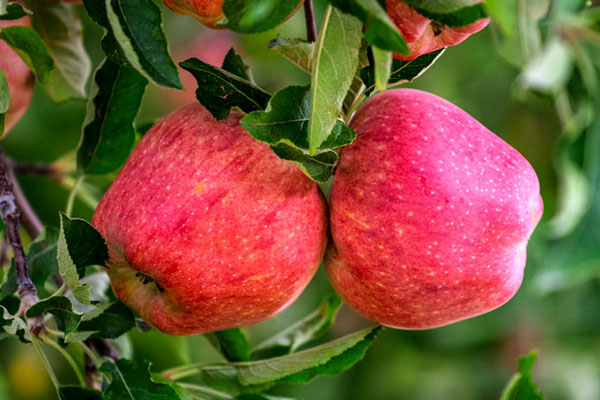
Eating Food in Season
Eating locally grown food in season is a great strategy for weight loss, good health, saving money and protecting the environment.
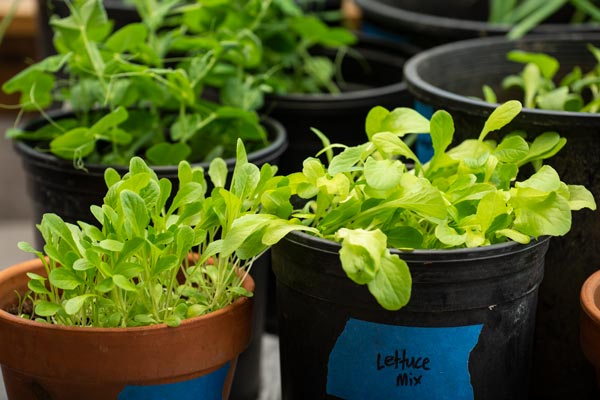
Return of the Victory Garden
A resurgence of gardening has accompanied sheltering at home during the pandemic, invoking victory gardens of the two world wars.
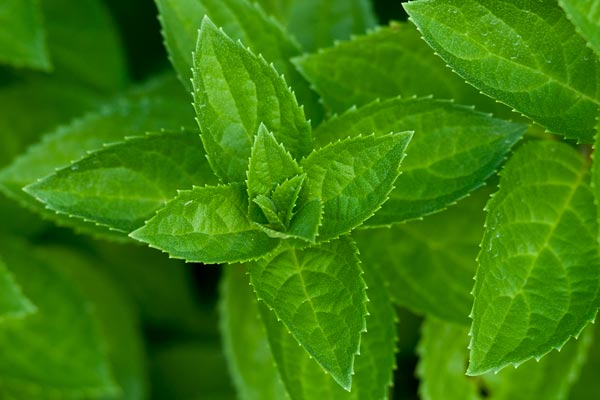
Green Thumbometer
Gardening can be a good way to relieve stress and get fresh air during the coronavirus shutdown. Here are a new tool and tips.
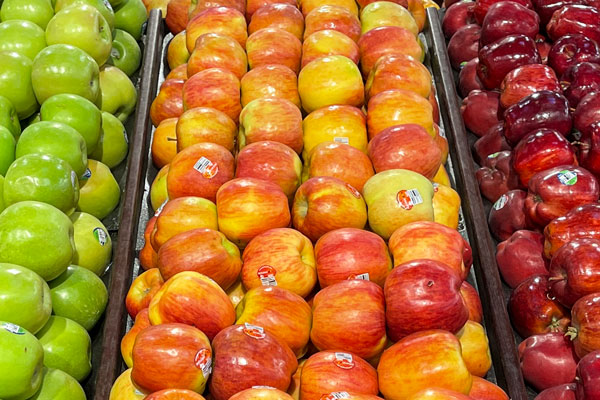
Apple Options
This time of year, supermarket counters are overflowing with apples. Here are some old-fashioned recipes that call for them.
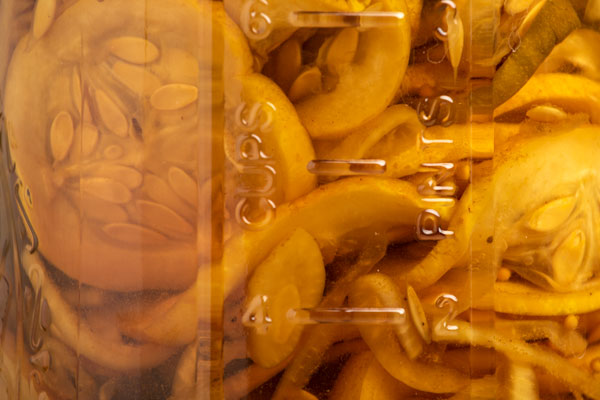
A World of Pickles
Pickling is one of the most common ways of food preservation the world over. See our recipes and information about pickles.

Creating an Easy Cooking System
Creating a simple, versatile cooking system can enable you to serve delicious meals at home even on days when you are swamped.
